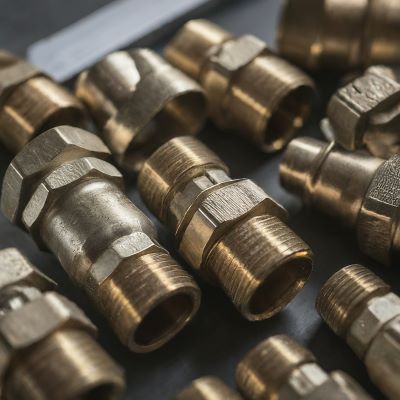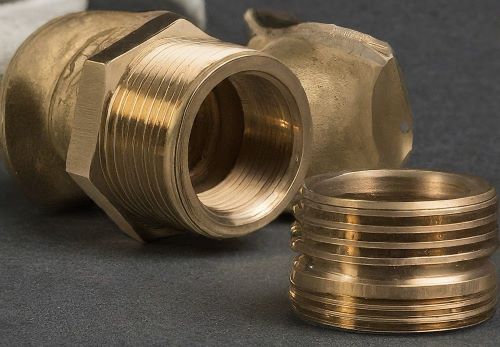The world of plumbing and pipe fitting can get confusing with all the different threads and connections. Two common standards you might encounter are BSPP and NPT threads, and while they might seem similar at first glance, they are actually incompatible.
This quick guide will explain what BSPP and NPT threads are, why they don’t work together, and when you’d need a BSPP to NPT adapter to get the job done.
What are BSPP and NPT Threads?
There are two main players in this game: BSPP and NPT. Let’s break them down:
A. BSPP (British Standard Pipe Parallel)
These threads have a parallel design, meaning the sides run straight without tapering. They share a flank angle of 55 degrees and come in imperial sizes (1/8″, 1/4″, 1/2″, etc.). BSPP threads rely on a chamfered (angled) sealing surface at the end of the male thread to create a tight connection with the female counterpart.
NPT threads are tapered, meaning they get slightly wider as they go deeper. Just like BSPP, they have a 55-degree flank angle and use imperial sizing. NPT threads achieve a seal through the wedging action created by the taper. Often, an appropriate sealant is used for additional security.
Why are BSPP and NPT Incompatible?
The key difference lies in their shape. BSPP’s parallel design won’t conform perfectly to NPT’s tapered threads, preventing a proper seal. Imagine trying to push a straight plug into a cone-shaped hole – it just wouldn’t fit right.
There is one exception: a male BSPT (tapered British Standard Pipe Thread) can sometimes be screwed into a fixed female BSPP for swivel applications, but this is not a common practice.
When to Use a BSPP to NPT Adapter
BSPP to NPT adapters come in handy when you need to connect components with these different thread types. This could be because:
➡️ You have readily available parts with BSPP threads and need to connect them to NPT components in your system.
➡️ You’re working on a project that involves connecting a legacy system with BSPP threads to a newer one using NPT.
Choosing the Right BSPP to NPT Adapter
There are two key factors to consider when choosing your adapter:
A. Thread Size and Direction: This might seem obvious, but it’s crucial! Make sure the adapter matches the BSPP thread size on one end and the NPT thread size on the other. The adapter will also have a male and a female end. The male end screws into the female BSPP component, and the female end receives the male NPT component.
B. Material Selection: BSPP to NPT adapters come in various materials, with brass and stainless steel being common choices. The best material for your project depends on factors like the pressure rating of your system and the type of media (liquid or gas) flowing through it.
Installation Tips for BSPP to NPT Adapters
Installing your adapter is fairly straightforward. Here’s a quick rundown:
➡️ Tighten the adapter securely using appropriate wrenches.
➡️ Don’t forget to use the recommended thread sealant for your application.
➡️ For precise installation instructions, always refer to the manufacturer’s instructions.
Conclusion
BSPP to NPT adapters bridge the gap between two common thread standards. By understanding the differences between BSPP and NPT and following these tips, you can choose the right adapter and ensure a secure and leak-free connection in your plumbing project.
Remember, if you have any doubts or are tackling a complex plumbing project, consulting a professional is always recommended.
Post time: Jul-11-2024



